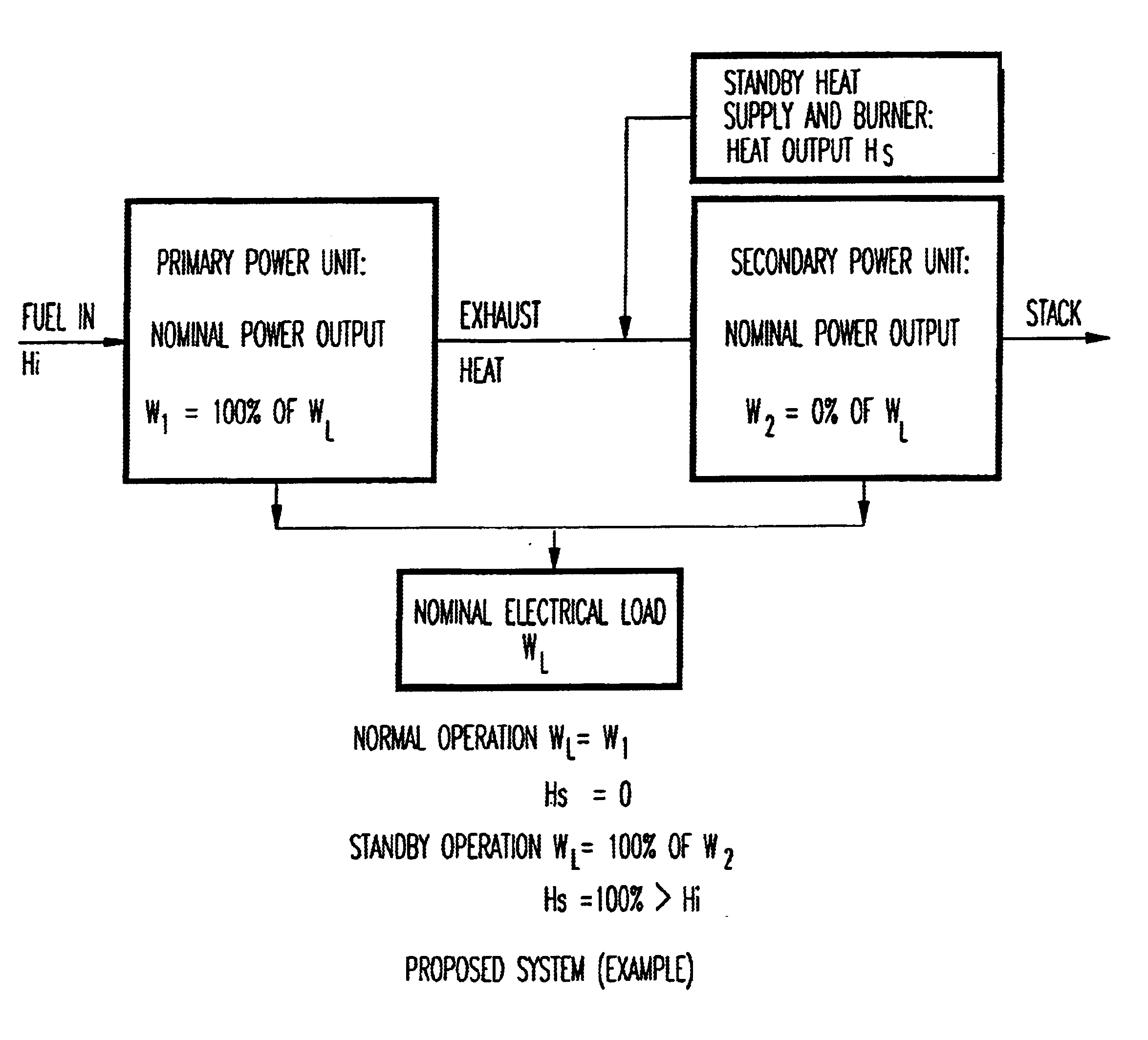Hybrid power system for continuous reliable power at remote locations
a power system and remote location technology, applied in emergency power supply arrangements, liquid degasification, separation processes, etc., can solve the problems of short-term standby power using batteries that is distinct from the disadvantage of short-term standby power, failure of the whole battery pack, and high cost of climate control
- Summary
- Abstract
- Description
- Claims
- Application Information
AI Technical Summary
Benefits of technology
Problems solved by technology
Method used
Image
Examples
Embodiment Construction
[0034]Turning now to the Figures, FIG. 1 represents a conventional high-efficiency combined-cycle power plant that is well-known in the art. As can be seen from the figure, fuel is supplied to a primary power unit which produces nominal power output. The power output of the primary power unit is generally about 60-80% of the required load. Heat is also exhausted from the primary power unit and supplied to a bottoming power unit, wherein power is produced and supplied to the load. In the conventional combined-cycle power plant as shown in FIG. 1, the ability of the bottoming power unit to produce electricity depends on the exhausted heat from the primary power unit. In other words, if the primary power unit suddenly stops working, the heat to the bottoming unit also stops and the bottoming power unit no longer is able to function.
[0035]The cascading heat from the primary power unit to the bottoming power unit increases the overall efficiency of the combined-cycle power plant in that ...
PUM
| Property | Measurement | Unit |
|---|---|---|
| Fraction | aaaaa | aaaaa |
| Fraction | aaaaa | aaaaa |
| Temperature | aaaaa | aaaaa |
Abstract
Description
Claims
Application Information
 Login to View More
Login to View More - R&D
- Intellectual Property
- Life Sciences
- Materials
- Tech Scout
- Unparalleled Data Quality
- Higher Quality Content
- 60% Fewer Hallucinations
Browse by: Latest US Patents, China's latest patents, Technical Efficacy Thesaurus, Application Domain, Technology Topic, Popular Technical Reports.
© 2025 PatSnap. All rights reserved.Legal|Privacy policy|Modern Slavery Act Transparency Statement|Sitemap|About US| Contact US: help@patsnap.com



